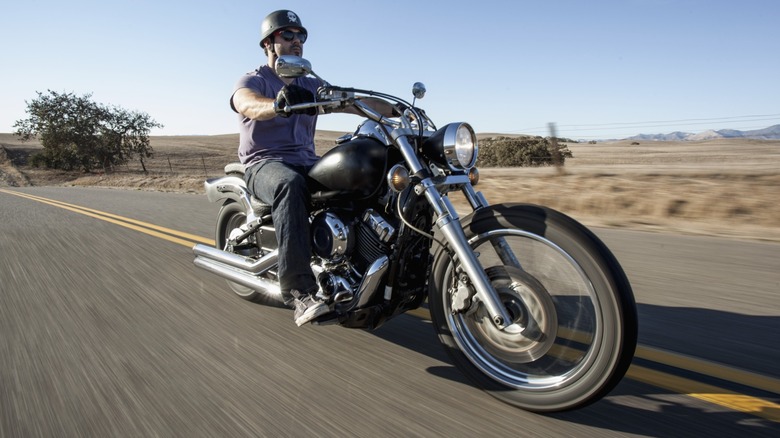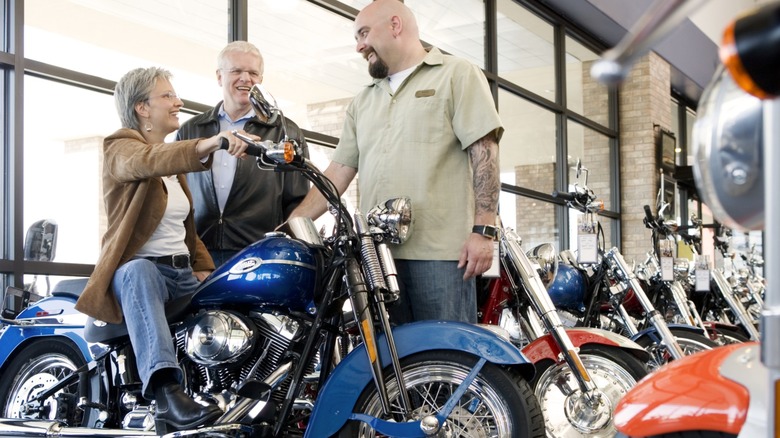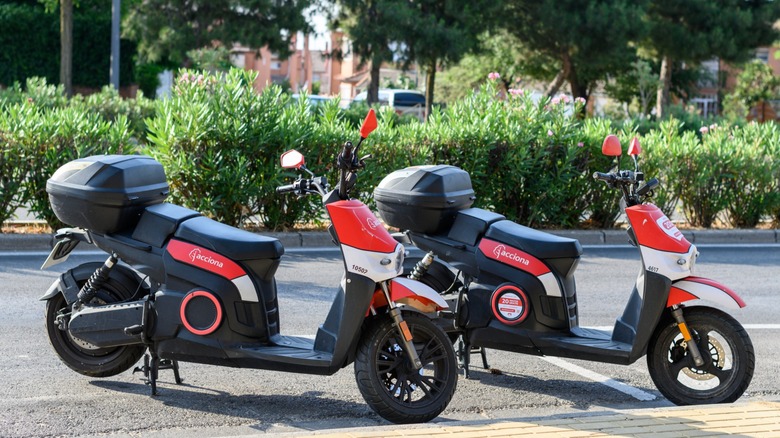Are Emissions Rules Making Motorcycles Slower?
Around the world, governments are tightening emissions standards for both cars and motorcycles. That puts pressure on manufacturers to build cleaner machines that still deliver the kind of performance riders expect. This balancing act affects everything from engine architecture to exhaust system design and often alters how a motorcycle feels on the road. To those who remember the raw, unbridled rush of older bikes, today's emissions-compliant models can sometimes seem tamer or more restrained.
The truth is that the changes required to meet these standards, like catalytic converters, secondary air injection, and ultra-precise fuel mapping, do affect how a motorcycle delivers power. But manufacturers are constantly adapting. Through smart engineering and innovative design, many have found ways to maintain, or in some cases even enhance, performance while still cutting harmful emissions.
In this article, we'll examine how modern emissions regulations are shaping the motorcycles we ride today. We'll explore what's changed under the hood, how manufacturers are responding, and how riders are adapting in a world where performance and environmental responsibility now go hand in hand.
What are the regulations affecting motorcycle performance?
The primary regulations impacting motorcycle performance today stem from the Euro 5 emissions standards that took effect on January 1, 2020. These regulations represent the fifth iteration of European emissions standards for motorcycles and have become the de facto worldwide standard due to Europe's significant influence on the global motorcycle market.
Euro 5 substantially tightens the allowable limits for various pollutants. Manufacturers must now produce motorcycles that emit significantly lower levels of carbon monoxide, unburnt hydrocarbons, and nitrogen oxides (NOx) than previous generations. Specifically, Euro 5 introduced a new measurement standard for hydrocarbons excluding methane, requiring that motorcycles produce no more than 0.1 g/km of hydrocarbons, with non-methane hydrocarbons representing less than 68% of that amount. This particular requirement has presented a considerable challenge for manufacturers, as a significant portion of motorcycle hydrocarbon emissions typically consists of non-methane compounds.
Beyond the stricter emissions limits, Euro 5 has also substantially extended the durability requirements for emission control systems. While Euro 4 required these systems to maintain compliance for 20,000 kilometers (approximately 12,427 miles), Euro 5 mandates compliance throughout the estimated lifetime of the vehicle. This significant extension necessitates more robust and sophisticated emission control technology that must function effectively for much longer periods. The regulations also require advanced onboard diagnostic (OBD) systems. Euro 5 mandates OBD stage II systems that go beyond the basic monitoring introduced in Euro 4. These newer systems must detect misfires and oxygen sensor deterioration, providing more comprehensive monitoring of the motorcycle's emissions performance.
These comprehensive regulations have forced motorcycle manufacturers to fundamentally redesign engines, exhaust systems, and electronic control units, all of which can directly affect a motorcycle's power delivery, throttle response, and overall performance characteristics.
Are these regulations making motorcycles slower?
When you consider the fact that some of the fastest bikes we've ever seen were manufactured in the face of these regulations, then the answer is no. While these emission standards have introduced strict limits on pollutants like carbon monoxide and nitrogen oxides, manufacturers have not simply accepted reduced performance as a trade-off. Instead, they have developed advanced engineering solutions to maintain power and efficiency while meeting environmental requirements. These regulations do pose challenges, but the industry has responded with innovation rather than compromise.
One of the key technologies helping motorcycles stay powerful under Euro 5 is Variable Valve Timing (VVT) and similar systems. BMW's ShiftCam, Ducati's Desmodromic Valve Timing, and Suzuki's VVT adjust how the engine breathes depending on speed. At low RPMs, these systems reduce wasted fuel and cut emissions, while at high RPMs, they optimize performance. This allows modern bikes to deliver strong power across the rev range without sacrificing efficiency. The result is that many Euro 5-compliant motorcycles perform just as well, or even better, than their predecessors.
Another strategy manufacturers have used is increasing engine displacement. Larger engines can produce the same power at lower RPMs, where combustion is cleaner and more efficient. For example, the Honda Africa Twin's engine grew from 998cc to 1,084cc, helping it meet emissions targets without losing performance. Similarly, BMW and Ducati have expanded engine sizes in models like the R 1250 GS and Multistrada V4.
Despite these advances, some motorcycles have been retired because they couldn't meet the new standards cost-effectively. Air-cooled engines, which lack the precision of modern liquid-cooled designs, have been especially affected. Models like the Kawasaki KLR650 and certain cruisers from Yamaha and Honda have been phased out because updating them to Euro 5 compliance would require expensive redesigns.
Are electric motorcycles the future?
Before looking too far ahead, we must note that electric motorcycles are already pretty common, and some of them can go very fast. It also helps that they are largely unaffected by the emission rules regulating bikes with conventional engines. However, with more stringent regulations to come in the following years, electric motorcycles are increasingly positioned as the future of motorcycling, with major manufacturers already committed to electrification timelines. The industry's direction is clear from manufacturer commitments. Honda plans to electrify its entire lineup, including motorcycles, by the 2040s. Yamaha aims for 90 percent plug-in vehicles by 2050. Kawasaki has set even more ambitious goals, targeting only hybrid and electric motorcycles in developed markets by 2035, with over 10 electric and hybrid models expected to roll out this year.
Despite their appeal, electric motorcycles do face some challenges. Battery limitations mean shorter range, and even with fast-charging infrastructure, recharging still takes longer than a quick fuel-up at a gas station. Additionally, electric motorcycles generally cost more to purchase. However, electric motorcycles also offer notable advantages. Operating costs are much lower, with minimal electricity expenses compared to fuel. Maintenance requirements are significantly reduced, eliminating many routine service items. The riding experience, while different, is more accessible: no stalling, no gear management, just smooth, immediate power delivery.
The environmental impact is perhaps the strongest argument for electrification. Research shows that even accounting for battery production and electricity generation, electric motorcycles produce substantially lower lifetime carbon emissions than petrol bikes. While traditional motorcycles will remain available for the foreseeable future, as manufacturers will continue to innovate means to meet emission standards while maintaining performance, the combination of regulatory pressure and manufacturer investment makes a compelling argument for electric motorcycles eventually becoming the dominant technology in the industry.



